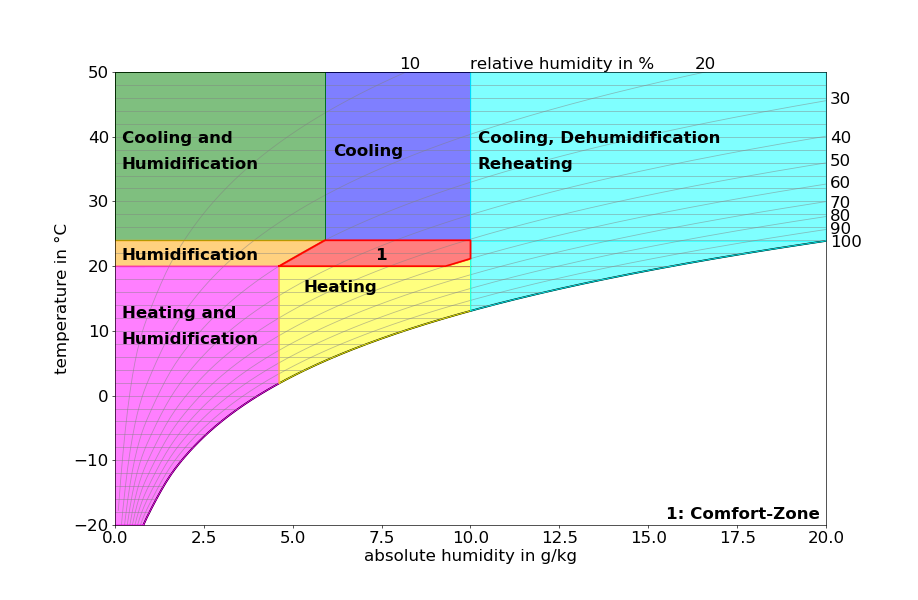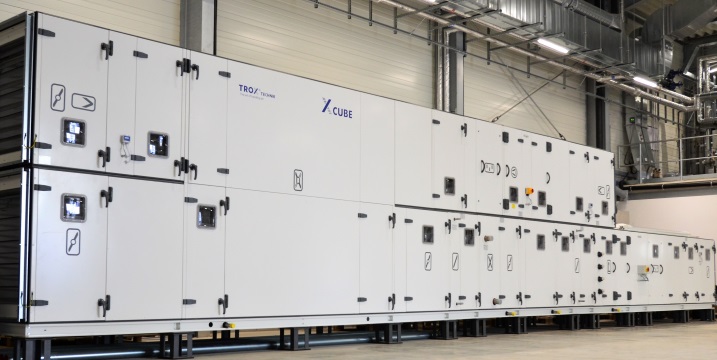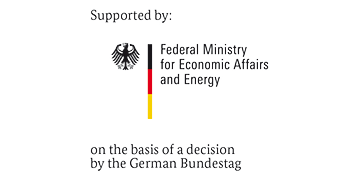
Within the framework of the Federal Ministry for Economic Affairs and Energy funded project EnEff:Luft (funding code: 03ET1223B), a simulation tool was developed at the Institute for Energy Efficient Buildings and Indoor Climate that enables the user to determine the annual energy requirement and the life cycle costs of air handling units (AHU). The calculation methodology is based on VDI Guideline 2067, which defines a comfort range for indoor air characterised by limit values for temperature and humidity. (see Figure 1) Depending on the condition of the outside air, the various functions of an AHU are addressed according to this comfort range, considering internal loads. Thus, the minimum energy required to condition the air to the nearest limit of the comfort zone is always calculated.


